A dishwasher that doesn’t clean properly can be a real hassle, affecting your daily routine and leaving you with dirty dishes. Keeping your dishwasher in top shape is essential for maintaining a clean and efficient kitchen. In this article, we’ll explore some common reasons why your dishwasher might not be delivering the sparkling clean results you expect and provide you with simple solutions to get it back to its best.
Check the Filters
Filters play a vital role in your dishwasher’s cleaning process. They catch food particles and debris, preventing them from redepositing on your dishes. If the filters are clogged or dirty, your dishwasher can’t perform at its best, leaving your dishes less than spotless.
How to Check and Clean the Filters:
- Locate the filters at the bottom of your dishwasher. They are usually found beneath the spray arms.
- Remove the filters carefully, following the manufacturer’s instructions.
- Rinse the filters under warm water to remove any food particles and debris. For stubborn buildup, use a soft brush.
- Reinstall the filters securely in their designated place.
Recommended Frequency for Cleaning Filters: To keep your dishwasher running smoothly, it’s a good idea to check and clean the filters every 1-2 weeks. This simple task can significantly improve your dishwasher’s performance and extend its lifespan.
Inspect the Spray Arms
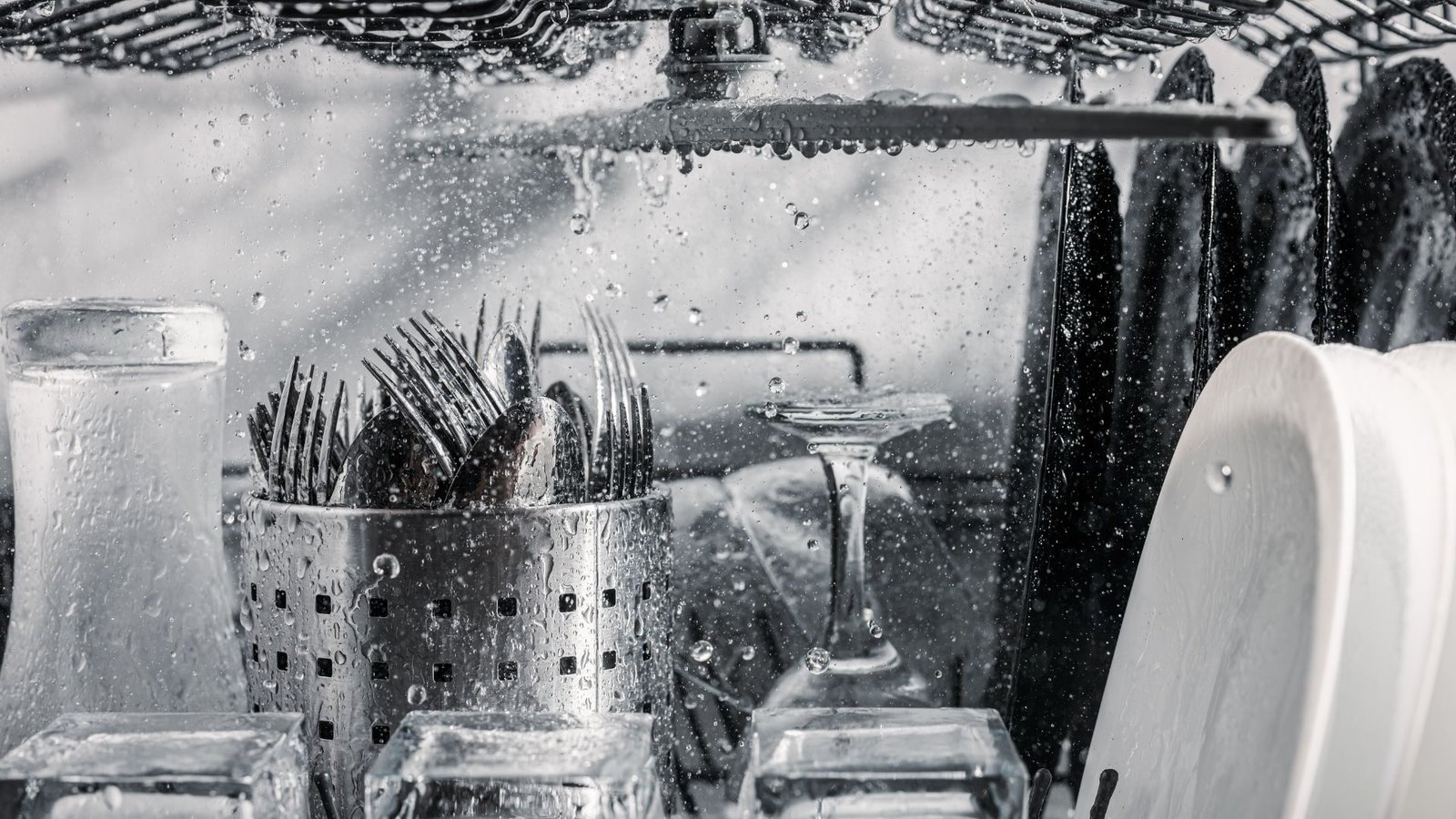
Spray arms are the unsung heroes of your dishwasher, responsible for directing water onto your dishes to remove food and grime. If they aren’t functioning properly, you might find your dishes coming out with spots or residue.
How to Check if Spray Arms Are Working Properly:
- Visual Inspection: Open your dishwasher and inspect the spray arms for any visible signs of damage or blockage.
- Rotation Test: Run a short cycle with the spray arms removed to ensure they rotate freely. If they don’t move smoothly, there could be an issue.
- Water Flow Check: Place a cup in the top rack and run a cycle. The cup should be filled with water from the spray arms. If it’s not, your spray arms may need attention.
How to Clean Spray Arms of Clogs or Debris:
- Remove the Spray Arms: Depending on your dishwasher model, you might need to unscrew or simply lift them off.
- Rinse and Clean: Use warm water to rinse out any debris. For stubborn clogs, use a thin brush or a toothpick to clear the spray nozzles.
Reattach the Spray Arms: After cleaning, securely reattach the spray arms and ensure they can spin freely.
Proper Loading of the Dishwasher
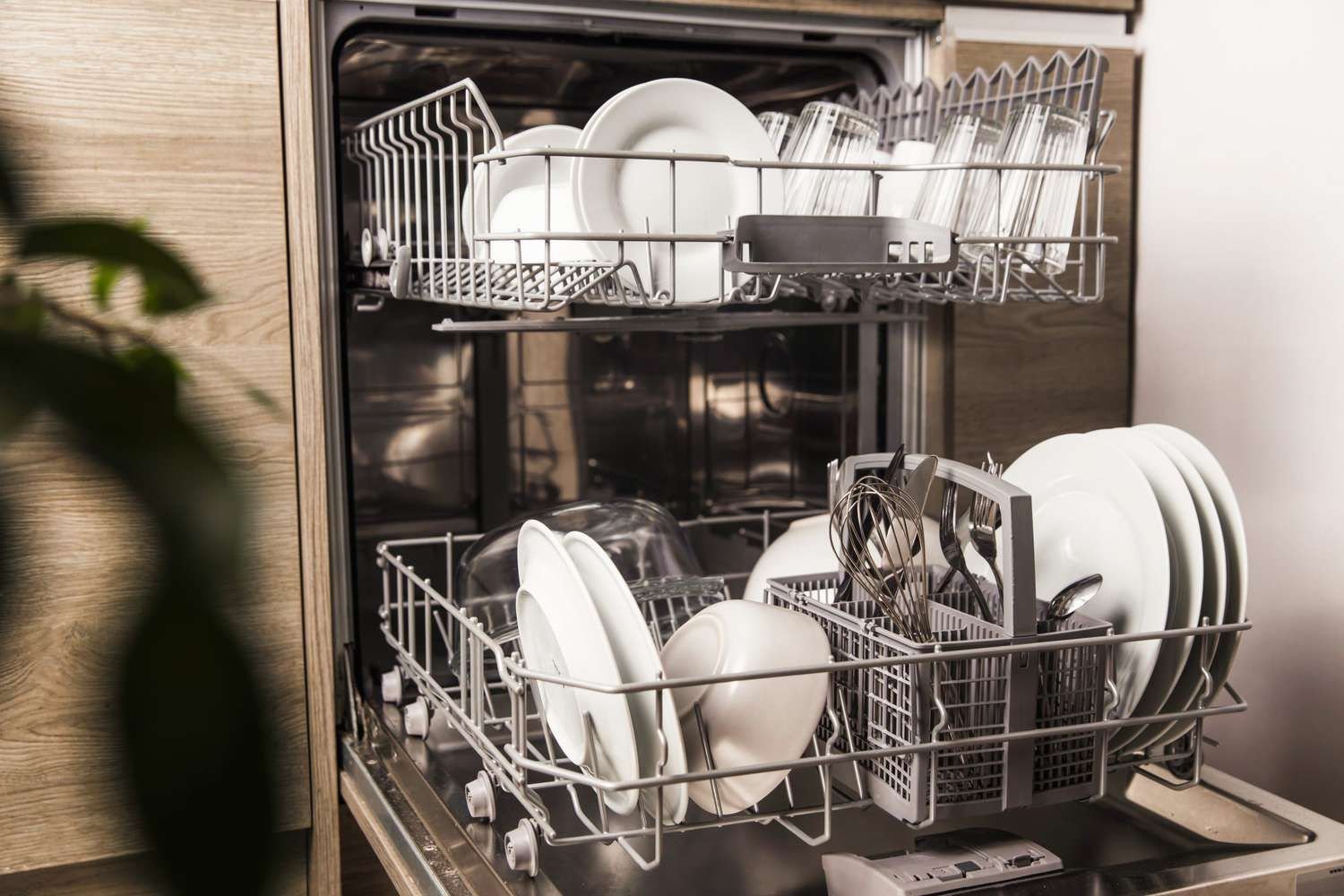
Loading your dishwasher correctly can make a big difference in how well it cleans. Improper loading can block spray arms and prevent water from reaching all your dishes.
Impact of Improper Loading on Cleaning Efficiency:
- Blocked Spray Arms: Dishes that are too close together or positioned incorrectly can obstruct water flow.
- Dish Orientation: Items placed the wrong way can prevent water from reaching them properly, leaving them dirty.
Tips for Loading Dishes Correctly:
- Top Rack: Place smaller items like glasses and cups in the top rack, ensuring they are angled downwards so water can drain out.
- Bottom Rack: Load larger items such as plates and pots here, facing them towards the spray arms. Avoid overloading to ensure proper water circulation.
- Utensil Basket: Mix utensils in the basket to prevent them from nesting together and blocking water flow. Place knives and sharp objects facing downwards for safety.
How to Arrange Items for Optimal Results:
- Spacing: Leave enough space between items to allow water to reach all surfaces.
- Avoid Blocking: Ensure that no items are blocking the spray arms from rotating.
- Check Manufacturer Guidelines: Follow any specific loading recommendations provided by your dishwasher’s manufacturer for the best results.
Use the Right Detergent
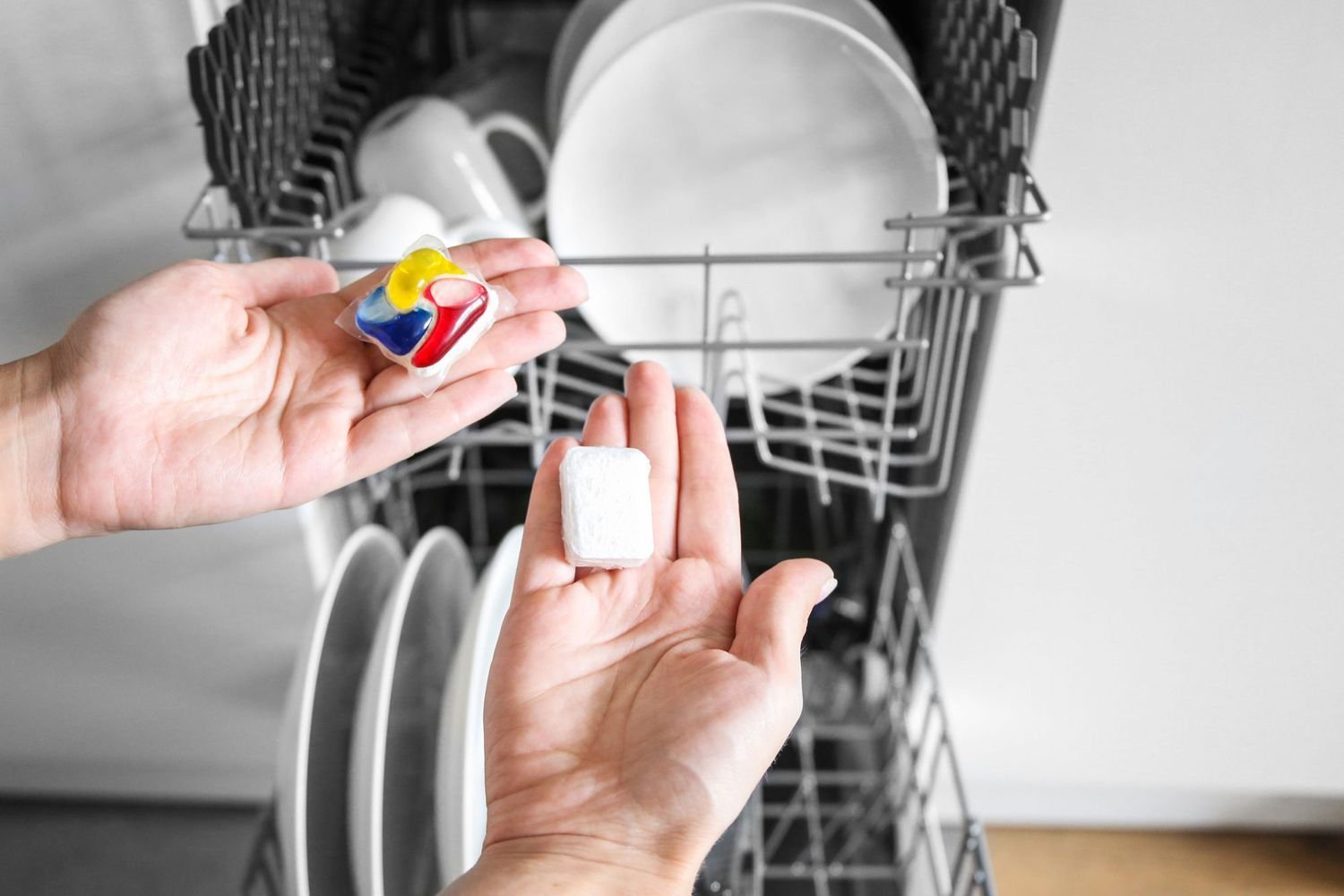
Using the right detergent is crucial for achieving clean, sparkling dishes. The quality of the detergent affects how well your dishwasher can break down food particles and remove grease.
Importance of Choosing a High-Quality Detergent:
- Effective Cleaning: High-quality detergents are formulated to handle various types of food residues and grease.
- Prevention of Residue: Good detergents prevent soap scum and residue from building up on your dishes and inside your dishwasher.
- Dishwasher Health: Using the right detergent can also help protect the internal components of your dishwasher from damage.
How to Select the Appropriate Detergent for Your Dishwasher:
- Check Compatibility: Ensure the detergent is suitable for your dishwasher model and type (e.g., powder, gel, or tablet).
- Consider Water Hardness: If you have hard water, choose a detergent that contains water-softening agents.
- Read Reviews: Look for products with positive reviews regarding cleaning effectiveness and reliability.
Frequency of Adding Detergent:
- Each Wash Cycle: Add detergent to the dispenser before each wash cycle. Avoid overfilling, as this can lead to residue on dishes.
- Adjust Based on Load Size: Use the recommended amount of detergent based on the size and soil level of the load. Check your dishwasher’s manual for specific guidelines.
Check Water Levels
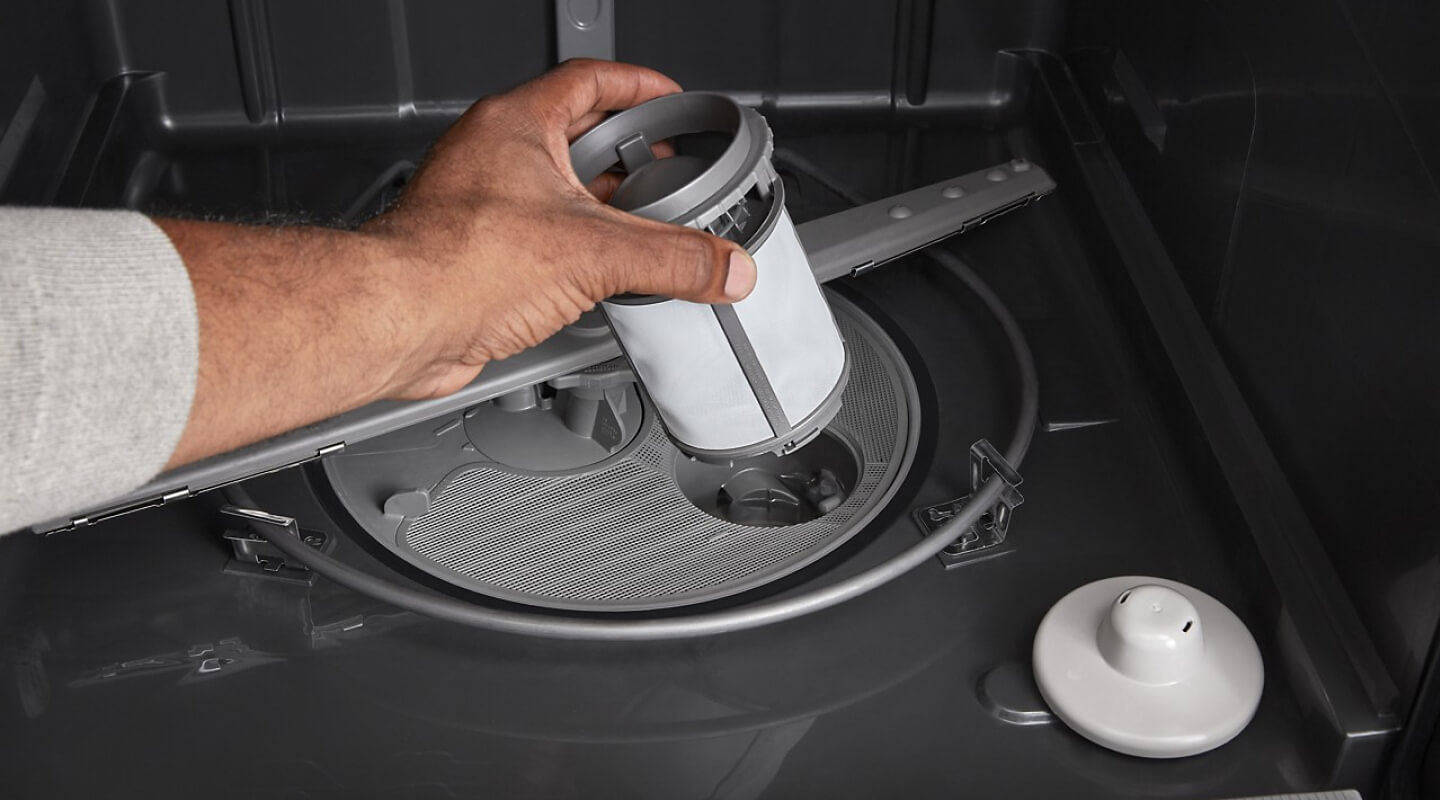
Proper water levels are essential for effective cleaning. If your dishwasher isn’t getting enough water, it won’t be able to wash dishes thoroughly.
How Water Levels Affect Cleaning Performance:
- Insufficient Water: Low water levels can lead to poor cleaning performance, leaving dishes dirty.
- Excess Water: Too much water can cause overflow and inefficient use of detergent.
Methods for Checking and Adjusting Water Levels:
- Check the Float Valve: The float valve regulates water levels. Ensure it moves freely and isn’t stuck.
- Inspect the Water Inlet Valve: Make sure the inlet valve is not blocked or malfunctioning. It should allow water to flow into the dishwasher properly.
- Run a Test Cycle: Observe the water levels during a test cycle to ensure they reach the appropriate level for effective cleaning.
What to Do If Water Levels Are Insufficient:
- Clean the Float Valve: Remove any debris around the float valve that may be causing it to malfunction.
- Check Inlet Valve: Inspect and clean the water inlet valve. If it’s damaged, consider replacing it.
Consult a Professional: If the problem persists, it may be best to seek professional help to diagnose and fix the issue.
Examine Water Pressure
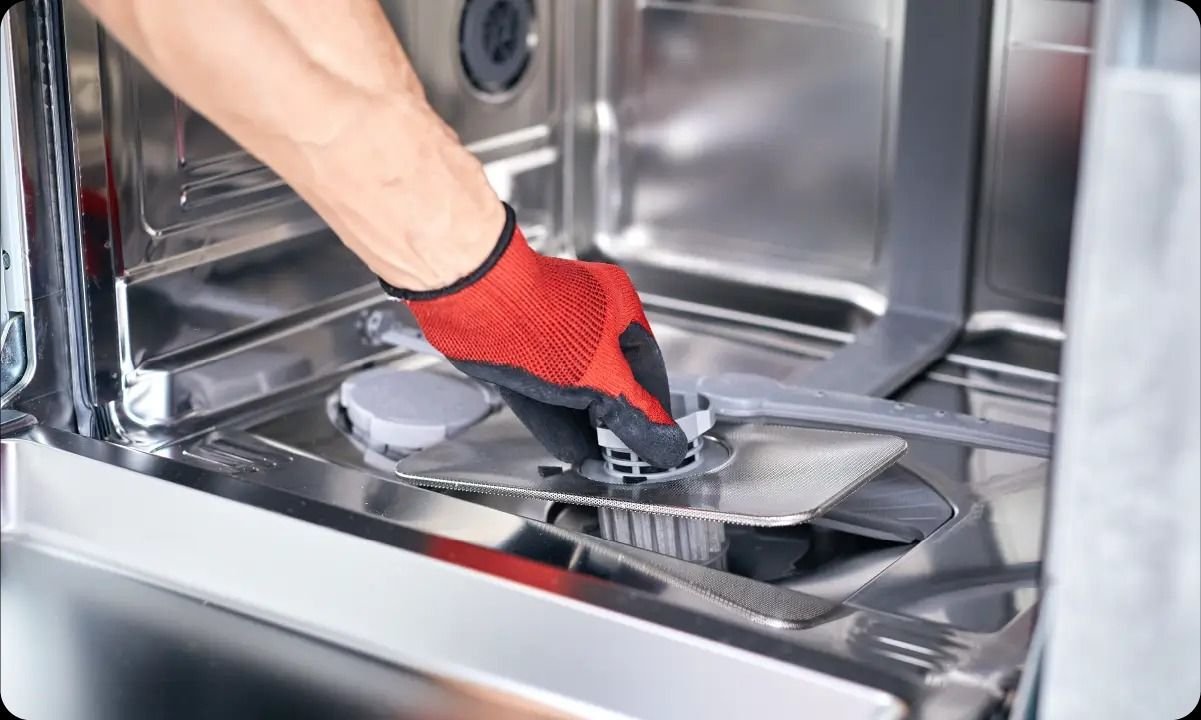
Water pressure is a key factor in how effectively your dishwasher cleans. Adequate water pressure ensures that your dishwasher can deliver the right amount of water to all areas, allowing for thorough cleaning.
How Water Pressure Influences Dishwasher Operation:
- Effective Cleaning: Proper water pressure helps spray arms distribute water evenly, ensuring that all dishes are cleaned thoroughly.
- Preventing Residue: Low water pressure can result in poor cleaning performance, leaving food particles and residue on your dishes.
How to Check and Adjust Water Pressure:
- Check the Water Pressure: Use a pressure gauge to measure the water pressure at your dishwasher’s water supply. Ideal pressure ranges from 20 to 120 psi (pounds per square inch).
- Adjust the Pressure: If the pressure is too low, adjust the main water supply valve to increase it. If it’s too high, you might need a pressure regulator.
Inspect for Issues: Look for any leaks or issues with the water supply line that might affect pressure.
Inspect the Hoses
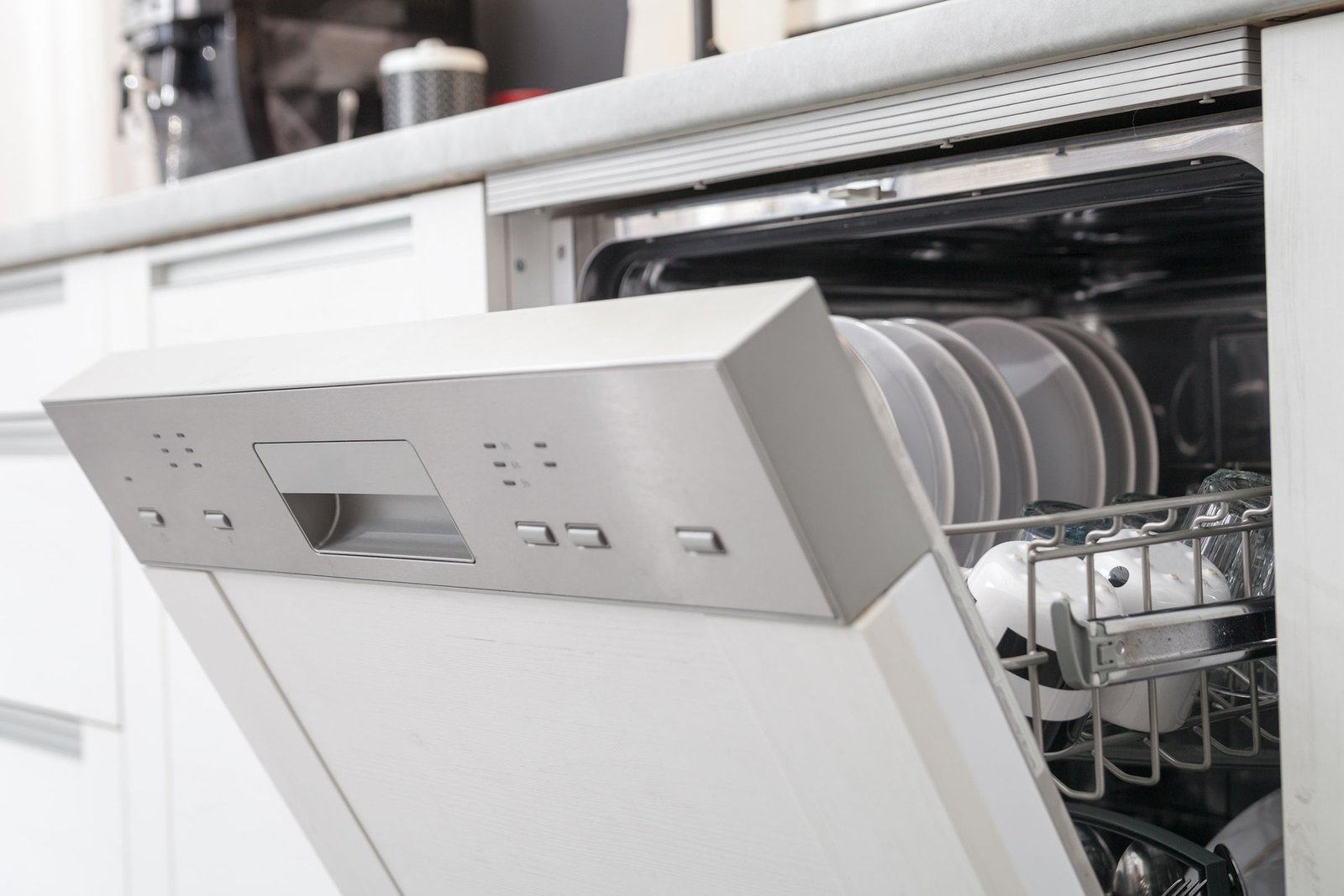
Hoses are essential for directing water into and out of your dishwasher. They ensure that water flows properly, which is crucial for effective cleaning.
Role of Hoses in the Cleaning Process:
- Water Supply: Hoses carry water from your home’s supply to the dishwasher.
- Drainage: They also remove wastewater from the dishwasher, ensuring that dirty water doesn’t interfere with the cleaning cycle.
How to Check for Clogs or Damage in Hoses:
- Visual Inspection: Examine hoses for any visible signs of wear, cracks, or leaks.
- Check for Clogs: Disconnect hoses and use a long brush or a pipe cleaner to clear any debris that might be obstructing water flow.
- Ensure Connections: Make sure hoses are securely connected at both ends. Loose connections can lead to leaks or improper drainage.
Recommendations for Hose Replacement:
- When to Replace: Replace hoses if you find any significant damage, such as cracks, severe wear, or persistent leaks.
- Choosing New Hoses: Select hoses that are compatible with your dishwasher model. Look for durable materials designed to withstand high water pressure.
- Installation: Follow the manufacturer’s instructions for installing new hoses to ensure a proper fit and prevent leaks.
Regular Maintenance

Regular maintenance is crucial for keeping your dishwasher in peak condition. It helps prevent common issues and ensures that your dishwasher continues to clean effectively.
Importance of Regular Maintenance:
- Prevents Breakdowns: Routine maintenance can help identify and fix minor issues before they become major problems.
- Improves Efficiency: Regular care ensures that your dishwasher operates at its best, providing cleaner dishes and saving energy.
- Extends Lifespan: Proper maintenance can extend the life of your dishwasher, protecting your investment.
Recommended Frequency for Maintenance:
- Monthly: Clean filters and spray arms, check for clogs, and ensure proper water levels and detergent use.
- Every 6 Months: Inspect hoses and connections, and check water pressure. Run a cleaning cycle with a dishwasher cleaner to remove buildup.
- Annually: Perform a thorough check of all components, including the float valve, water inlet valve, and internal parts. Consider professional servicing if needed.
Tips for Regular Upkeep and Preventing Issues:
- Clean Regularly: Wipe down the interior, remove food particles, and clean filters and spray arms to keep everything functioning well.
- Use the Right Products: Use dishwasher cleaners and high-quality detergents to maintain cleanliness and prevent residue buildup.
- Check Seals and Gaskets: Regularly inspect and clean seals and gaskets to prevent leaks and ensure a tight seal.
Conclusion
Maintaining your dishwasher with regular checks and care is key to ensuring it continues to perform effectively. By following these steps—checking filters, inspecting spray arms, loading dishes properly, using the right detergent, and ensuring proper water pressure and hose condition—you can address common cleaning issues and keep your dishwasher in top shape.
If you’ve tried these tips and your dishwasher is still not performing as it should, it might be time to seek professional help. An expert can diagnose and resolve more complex issues to get your dishwasher back to its optimal performance.
By staying proactive with maintenance, you’ll enjoy cleaner dishes and a smoothly running dishwasher, making your kitchen chores more manageable and less stressful.








